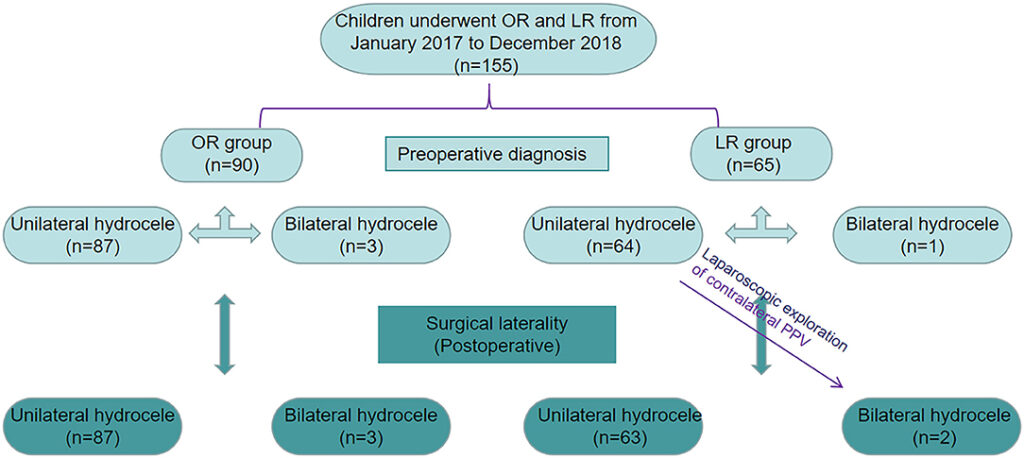A hydrocele is a common condition that affects males, particularly infants and older men. It occurs when fluid accumulates in the thin sac surrounding the testicle, leading to swelling in the scrotum. While this condition is generally harmless, it can sometimes cause discomfort or indicate an underlying issue. In this article, we will explore what a hydrocele is, its causes, symptoms, and available treatment options.

What Is a Hydrocele?
A hydrocele is characterized by the buildup of fluid within the tunica vaginalis, which is the protective lining around the testicle. This fluid accumulation can result in a painless swelling of the scrotum. There are two main types of hydroceles:
- Communicating Hydrocele: This type occurs when the sac surrounding the testicle does not close properly, allowing fluid to flow between the abdomen and the scrotum.
- Non-Communicating Hydrocele: In this case, the fluid becomes trapped within the sac and does not communicate with the abdominal cavity.
Hydroceles are more commonly observed in newborns and older men, though they can occur at any age.
Causes of Hydroceles
The development of a hydrocele can be attributed to various factors, depending on the age group affected.
In Infants
During fetal development, the testicles descend from the abdomen into the scrotum through a passage known as the inguinal canal. Normally, this passage closes before birth. However, if it remains open, fluid from the abdomen can leak into the scrotum, leading to a communicating hydrocele. Non-communicating hydroceles in infants often resolve on their own as the body reabsorbs the fluid.
In Adults
In adults, hydroceles typically develop due to inflammation or injury to the scrotum or testicle. Some common causes include:
- Infection: A bacterial or viral infection of the testicle or epididymis can lead to inflammation and subsequent fluid accumulation.
- Injury: Trauma to the groin area may cause blood vessels to leak fluid into the scrotum.
- Tumors: Although rare, tumors in the testicle or surrounding tissues can disrupt normal fluid drainage.
- Surgery: Procedures involving the groin or scrotum, such as hernia repair, may sometimes result in a hydrocele.
Symptoms of Hydroceles
One of the hallmark signs of a hydrocele is a swollen scrotum. The swelling is usually painless but can vary in size throughout the day. Below are some common symptoms associated with hydroceles:
- A noticeable increase in the size of one or both sides of the scrotum.
- A feeling of heaviness or dragging sensation in the groin area.
- Discomfort or mild pain, especially if the hydrocele becomes large.
- Transillumination, where a light shone through the scrotum highlights the presence of fluid rather than solid tissue.
In infants, hydroceles are often detected during routine check-ups. Parents might notice a bulge in the baby’s scrotum that changes in size over time.
Diagnosing a Hydrocele
To confirm the presence of a hydrocele, healthcare providers use a combination of physical examination and diagnostic tests.
Physical Examination
During a physical exam, the doctor will assess the size and consistency of the scrotal swelling. They may also perform a transillumination test, where a small flashlight is held against the scrotum to determine whether the swelling contains fluid or solid material.
Diagnostic Tests
If the diagnosis is unclear or if there is suspicion of an underlying condition, additional tests may be recommended:
- Ultrasound: This imaging technique helps differentiate between a hydrocele and other conditions like tumors or hernias.
- Blood Tests: These may be conducted to check for signs of infection or inflammation.
Treatment Options for Hydroceles
The treatment approach for a hydrocele depends on several factors, including the patient’s age, the size of the hydrocele, and whether it causes any symptoms.
Observation
In many cases, especially in infants, hydroceles resolve spontaneously without requiring intervention. Doctors often recommend monitoring the condition over time to see if it improves on its own.
Aspiration
For adults with large or symptomatic hydroceles, aspiration may be performed. During this procedure, a needle is inserted into the scrotum to drain the accumulated fluid. While effective in reducing swelling, this method carries a risk of recurrence and potential complications such as infection.
Surgical Intervention
Surgery is typically reserved for persistent or recurrent hydroceles that cause significant discomfort or interfere with daily activities. The most common surgical procedure is called a hydrocelectomy, which involves making a small incision in the scrotum or groin to remove the fluid-filled sac. This operation is generally safe and has a high success rate.
Recovery After Surgery
Following surgery, patients are advised to rest and avoid strenuous activities for a few weeks. Swelling and bruising are normal after the procedure and should subside within a few days. Pain medication may be prescribed to manage post-operative discomfort.
Preventing Hydroceles
While it may not always be possible to prevent hydroceles, certain measures can reduce the risk of developing this condition:
- Avoiding trauma to the groin area.
- Treating infections promptly to minimize complications.
- Seeking medical attention for any unusual swelling or discomfort in the scrotum.
When to See a Doctor
Although hydroceles are typically benign, it is important to consult a healthcare provider if you experience any of the following:
- Persistent or worsening scrotal swelling.
- Pain or redness in the scrotum.
- Fever or signs of infection.
- A sudden increase in the size of the hydrocele.
Early evaluation ensures timely diagnosis and appropriate management of the condition.





